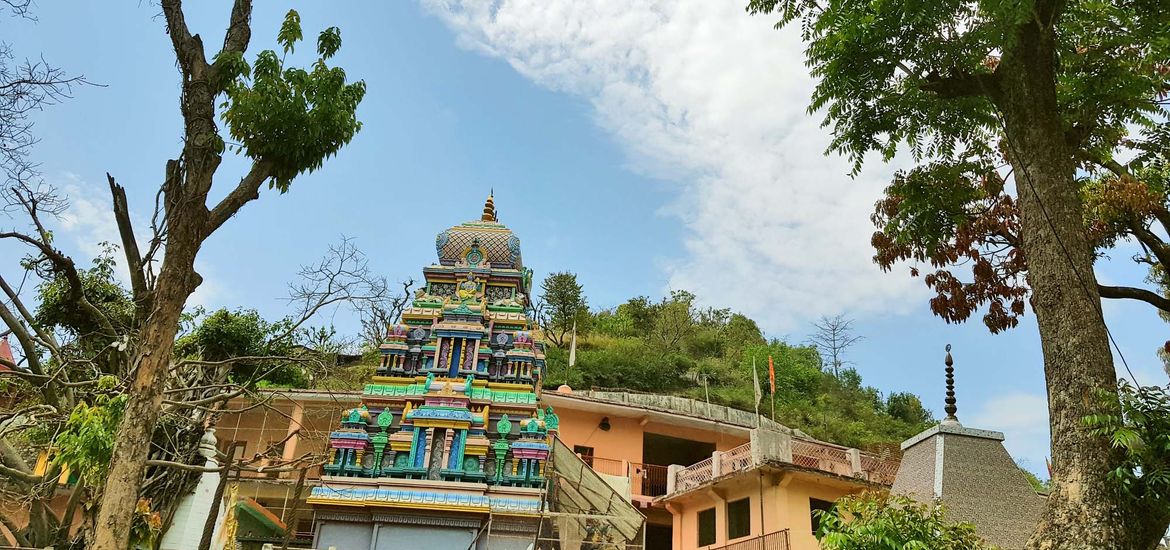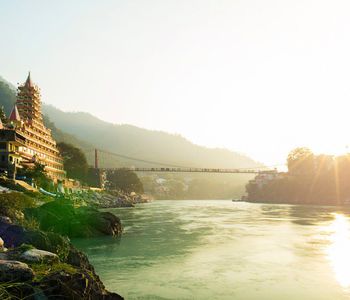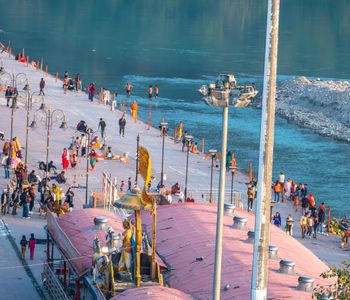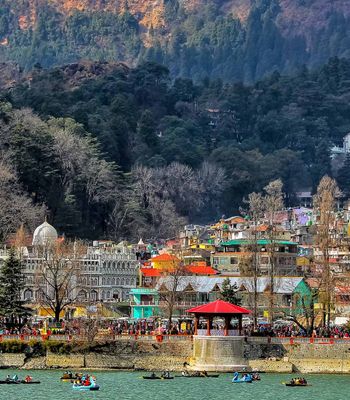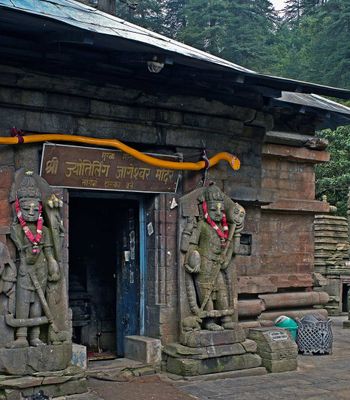High up in the hills near Rishikesh, where the forests whisper ancient stories and the air feels sacred, stands the Neelkanth Mahadev Temple. It’s not just a place of worship—it’s a journey into legend, faith, and quiet wonder.
Every year, thousands walk the winding roads just to catch a glimpse of the shrine that holds centuries of devotion. Whether you believe in the myths or are simply drawn by the peace of the mountains, this temple has a way of leaving something unforgettable behind.
Tracing the Mythological Roots: The Sacred History of Neelkanth Mahadev
The Neelkanth Mahadev Temple, located near Rishikesh in Uttarakhand, is a unique example of Dravidian-style architecture in Northern India. Though the exact date and builder of the temple are not recorded, its origin is deeply rooted in Hindu mythology.
According to the Puranas, this is the sacred site where Lord Shiva drank the deadly poison "Halahala" during the legendary Samudra Manthan (churning of the ocean). Shiva held the poison in his throat to save the universe, which turned blue, earning him the name "Neelkanth," or "The Blue-Throated One."
After consuming the poison, Shiva is believed to have meditated beneath the Panchpani tree for 60,000 years. At the very spot, the temple’s sanctum sanctorum (Garbha Gruha) houses a throat-shaped Shiva lingam, marking the divine event.
The temple's continued reverence through the centuries and its sacred location, surrounded by the Manikoot, Brahmakoot, and Vishnukoot ranges and the rivers Pankaja and Madhumati, highlight its timeless significance. Today, it remains a key pilgrimage site, celebrating Lord Shiva’s act of cosmic sacrifice and divine protection.
Where Myth Meets Architecture
The Shri Neelkanth Mahadev Temple is a striking example of Dravidian-inspired architecture in North India. Key architectural highlights include:
- The temple’s most prominent feature is its Gopura or Shikhara, a tiered pyramidal tower commonly found in Pandya-style Tamil temples.
- Adorned with intricate motifs, friezes, and sculptures, the Shikhara vividly illustrates the epic of Samudramanthan, featuring sculpted depictions of Devas and Asuras engaged in the cosmic event.
- One unique structural feature is the natural spring within the temple complex, where devotees bathe before entering, symbolising purification.
- The temple is nestled amidst dense forests and flanked by mountain ranges, aligning with the ancient practice of situating spiritual sites in energy-rich natural environments.
Divine Details: Highlights of Neelkanth Mahadev Temple
Beyond its mythical origins and humble façade, the Neelkanth Mahadev Temple holds a wealth of sacred gems waiting to be uncovered. Here’s a closer look:
- Perched at an altitude of 1,330 meters, the temple is scenically set atop a hill, surrounded by the lush greenery of the Nar-Narayan mountain range, offering a peaceful spiritual retreat.
- At the heart of the temple lies the sanctum, housing the sacred Shiva Lingam, symbolising Lord Neelkanth—Shiva in his poison-bearing form.
- Surrounding the sanctum are ornately carved walls that showcase various episodes from Hindu mythology, enhancing the spiritual and visual richness of the structure.
- The temple complex also features a sacred Peepal tree, where devotees tie threads and offer prayers, believing it to fulfill wishes and cleanse the soul.
Weathering the Divine Journey
The Neelkanth Mahadev Temple offers a year-round spiritual retreat amidst lush green forests and misty mountains. However, the ideal months to visit are February to March and August to October. During these months, the weather remains pleasantly cool, making the uphill journey and the temple surroundings more comfortable.
For those who wish to soak in the natural beauty, the early morning hours between 5:00 AM and 9:00 AM are perfect. The temple, surrounded by sparkling streams and the rising sun peeking through the hills, looks genuinely scenic and serene. The atmosphere is peaceful, the light is soft, and the chants create a profoundly meditative vibe.
Finding Your Way to Neelkanth
The Neelkanth Mahadev Temple is approximately 38 km from Rishikesh in the Pauri Garhwal district of Uttarakhand. Here’s how to reach:
By Air
The nearest airport is Jolly Grant Airport (DED) in Dehradun, about 54 km from the temple. From the airport, taxis and local transport are readily available for onward travel. The drive takes around 2 to 2.5 hours, depending on traffic and road conditions.
By Train
The nearest railway station is Rishikesh Railway Station, about 36 km away from the temple and well-connected to major cities in North India. From there, it takes roughly 1.5 hours by road to reach the temple.
By Road
The temple is accessible via the scenic Rishikesh–Neelkanth Road, which offers stunning views of lush hills and tranquil forest stretches. You can hire local taxis, shared jeeps, or tuk-tuks to reach the temple from Rishikesh. Buses also ply this route, but availability may vary. Renting a scooter or bike is a popular choice, especially for those looking to enjoy the winding roads and panoramic views of the Himalayan foothills.
Celebrating Faith and Devotion
The Neelkanth Mahadev Temple is not just a sacred site—it's a lively hub of devotion, especially during key Hindu festivals. Maha Shivaratri is the most prominent celebration here.
Devotees from all over India gather at the temple to honour Lord Shiva on this auspicious night. The temple glows with colourful lights and floral decorations, while the air is charged with spiritual energy, echoing with hymns, conch shells, and the rhythmic ringing of temple bells. Rituals like fasting, night-long vigils, and Abhishekam (sacred bathing of the Shivalinga) make the festival deeply immersive.
Adding to the spiritual fervour are the annual Kawad Yatras, held during Maha Shivratri (Feb–March) and Shravan Shivratri (July–August). These sacred pilgrimages see thousands of saffron-clad devotees, or Kawarias, trekking barefoot from Haridwar to Neelkanth, carrying holy Ganga water. The atmosphere is charged with cries of “Bol Bam!”, devotional songs, and unwavering faith.
Whether you're drawn by mythology, mesmerised by the architecture, or simply seeking peace amidst the hills, Neelkanth Mahadev Temple offers more than a visit; it offers an experience. Every step here echoes with legends, and every prayer carries centuries of devotion. It’s not just a destination—it’s a divine pause in time.
